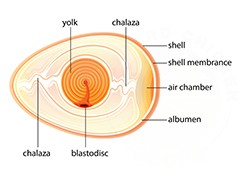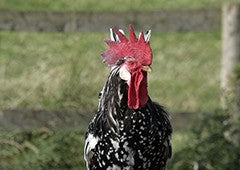Guinea Pigs LOVE to eat! They practically live to eat. A Guinea Pig’s voracious appetite is a tell-tale sign of a happy, healthy little cavvy. They enjoy a variety of foods so thankfully, they’re easy to please. So, if you want to be cavvy savvy and offer your hungry little critters a balanced diet, have a good gnaw on these tips for what’s good and what’s not so good.
The Basic Guinea Pig Diet
The basic foundation of a Guinea Pig’s diet is simple - water, pellets and grass hay. That’s easy enough.
Water
Water is essential to Guinea Pig health. They drink a LOT of water. A quick peak at their diet and you’ll discover why fresh water is always a priority. Their diet staples—pellets and grains— are mostly dry, so fresh, clean water should be available 24/7.
Pellets
- Pellets, although comprised of mostly hay, offer necessary vitamins and minerals that grass hays simply do not contain. Vitamins A, B-12, C, D and E as well as minerals such as Phosphorous, Niacin, Biotin and Selenium help your cuddly cavies grow and develop into healthy active adults. Avoid pellets that contain additions such as nuts and seeds or other unnecessary additives like sweeteners, preservatives or colors.
- Alfalfa Hay Pellets: Alfalfa based pellets are higher in calcium, fat and sugar; therefore are best suited for young cavies 6 months of age and older, adults, and pregnant and nursing mothers. Feel free to offer 1/8 cup to ¼ cup of alfalfa pellets daily based on age. Or, you can offer these pellets as an occasional treat.
- Timothy Hay Pellets: Guinea pigs can have unlimited timothy hay pellets. Yay!
Grass Hays>
Grass hays should make up about 70%-80% of your guinea pig’s diet. Serve up a heaping bowl of grass hay and make your guinea pigs giddy with glee. Hays mimic the natural environment of guinea pigs in the wild. So, they’re naturally drawn to its unique scent, textures, and taste. Hay also benefits a cavy’s digestive system because it’s full of fiber which aids digestion and helps keep chewy cavy teeth healthy—gnawing on hay helps to wear down busy teeth to keep them from growing too long.
There are several types of grass hay, but each kind is suited for different stages of development and each has specific benefits:
Timothy Hay
The most popular, by far, is Timothy Hay—the perfect all day, every day buffet hay—which is low in fat, chock full of fiber and sufficient protein as well as moist and delicious. This hay is also readily available, so it’s easy to provide.
Let’s talk cuttings. All timothy hay is not created equal. You can purchase timothy hay as 1st cutting, 2nd cutting, and 3rd cutting. What’s the difference between cuttings?
- First Cutting: Hay is higher in fiber and full of cavy-lovin’ seed heads, but the texture of the hay itself is a bit coarse for even the most discriminating guinea pig.
- Second Cutting: Ahhhh, perfect, is what your cavy would say if it could express its LOVE for 2nd cutting hay. This hay is still high in fiber, but the texture is Oh so soft and delicious to a hungry piggy.
- Third Cutting: Now, while the typical guinea pig would devour this in a matter of seconds as it is soft and palatable like the 2nd cutting, this hay is lower in fiber and contains a bit more protein than the others cuttings. It’s also not readily available, so it’s not recommended to offer this cutting on a regular basis.
So, there you have it, my friends—the vote is in, and the winner is…2nd cuttings!
Botanical Hay
This type of hay is a bit of a smorgasbord of flavors and textures. Botanical grass hays typically contain tidbits of herbs such as clover, lemon balm, chamomile and lavender as well as dried flower petals. Yummy! The fresh outdoorsy scent alone may have your guinea pigs racing to the dinner table, so to speak.
Oat Hay
Oat hay will delight your piggies with its thick, crunchy texture and fiber-rich dose of health in a stalk. Oat hay is to guinea pigs what warm, delicious oatmeal, oatmeal cookies, and rich, oat bread is to us. Mmmmm, they are going to LOVE their oat hay!
Orchard Grass Hay
This great dual-purpose hay makes a nice bedding and treat—soft on the feet and yummy to eat.
Clover and Alfalfa Hays
These two hays come with special instructions. Because both hays, which are actually considered to be legumes, are higher in calcium, they should only be given to young cavies ages 6 months and under and pregnant or nursing mothers. Clover and alfalfa hays are also higher in fat and sugar, so a good rule of thumb is to offer it to adult guinea pigs as an occasional treat.
DO Feed Your Guinea Pigs a Variety of Fruits and Vegetables
Happy, healthy little herbivores like guinea pigs love nothing better than a great salad, fresh fruits and veggies. A mixture of crunchy, nutrient-filled foods make great supplements. So, how much of a good thing can you feed your ravenous little cavies?
Allow your guinea pigs to have up to 1 cup of fresh vegetables every day. Limit fruit servings to 2 times per week—serving size is approximately 1-2 tablespoons for every 907 grams of body weight. A few things to keep in mind when supplementing your cavy’s diet with fresh fruits and vegetables is that due to possible higher water content, your little friends may not drink as much as usual. So, don’t be alarmed. Your cavy tummies are most likely filled up with fruity goodness. And, a great rule of thumb, is to introduce new foods one at a time, similar to babies and toddlers.
Healthy Vegetables
- Basil
- Brussel Sprouts
- Carrots
- Cucumbers
- Endive
- Green capsicum
- Mint leaves
- Radicchio
- Radish tops
- Raspberry leaves
- Romaine and Red or Green Leaf Lettuce
Healthy Fruits
- Apples
- Blueberries
- Melon
- Oranges and their appealing peels, too
- Papaya
- Pear
- Peach
- Pineapple
- Plum
- Raspberries and Strawberries
- Tomatoes
DO NOT Feed Your Guinea Pigs These Foods
As with any pet, there are particular foods that are strictly off limits. These foods may cause illness, be filled with empty calories causing unhealthy weight gain, or be poisonous to the pet’s system. Your happy little cavies rely on you to keep them safe and healthy.
- Bananas
- Beans
- Bok Choy
- Broccoli
- Cabbage
- Cauliflower
- Celery
- Collards
- Iceberg Lettuce
- Kale
- Grapes
- Mustard Greens
- Raisins
- Seeds in husks
- Spinach
The Key to a Healthy, Happy Guinea Pig is a Healthy, Varied Diet
Yes, the key to a happy, healthy guinea pig is a happily varied diet. The great news is that there are soooo many different choices available, so designing the perfect diet for your little companion, is like cavy play. So, mix it up a bit and you’ll be rewarded with happy, healthy guinea pigs for years to come.
Oh, and be sure to check out our awesome guinea pig hutches.





















